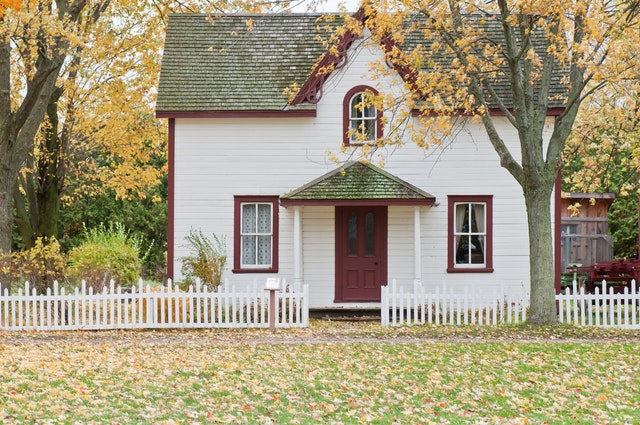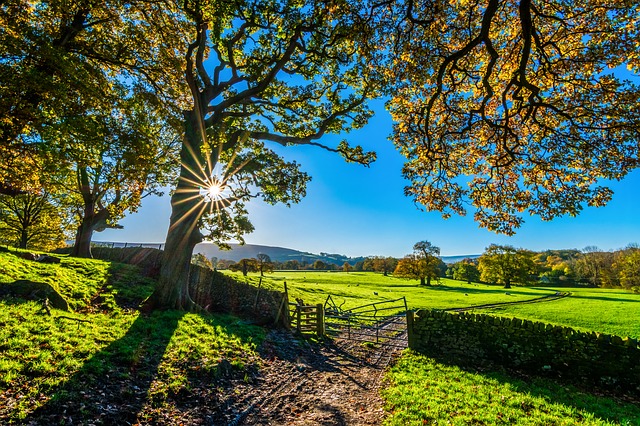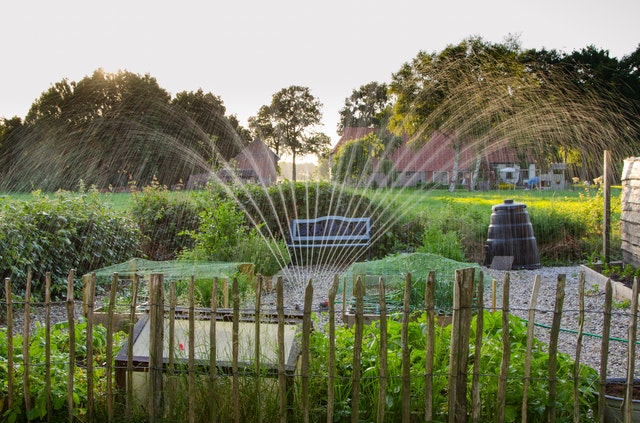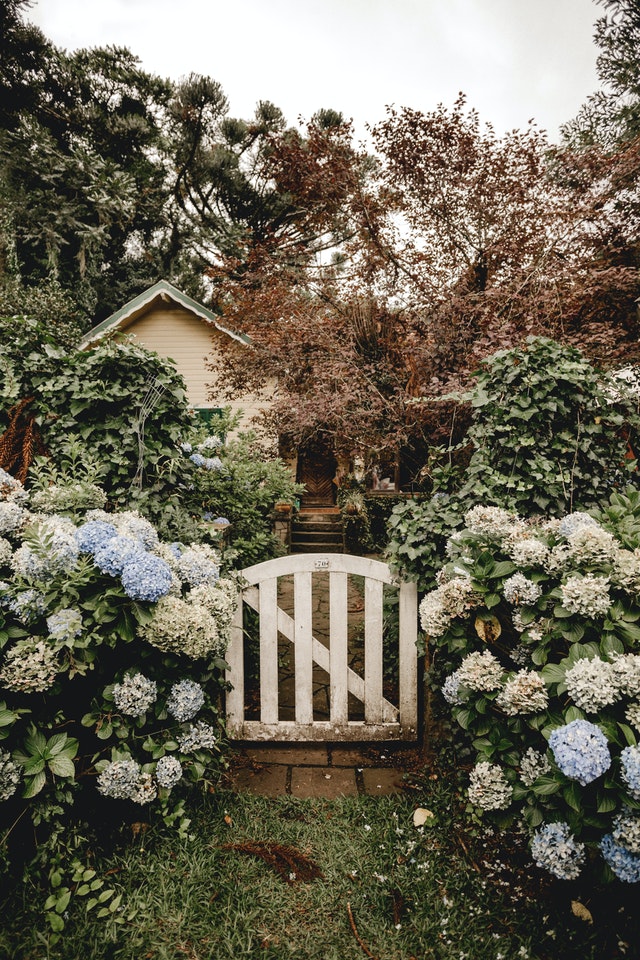Salvaged floorboards, scaffolding planks, driftwood, barn timbers, old sheds, old doors and cupboards, wooden signs, broom handles, headboards, window frames, second-hand stock fencing there’s a wide variety of material and forms at your disposal. You’ll be reusing a valuable resource too—garden timber isn’t always sourced responsibly, so you’ll be recycling an increasingly costly material and reducing the pressure on existing lumber forests.
When you are using reclaimed timber or found wood, there are some practical considerations to think about. Untreated wood will naturally rot when left outside. If you’re not worried about replacing you’re your fence after a few years, leave it to simply decay gracefully and enjoy the process. Not all gardeners want permanence—there’s beauty in the idea that any physical boundaries are as fleeting and ever-changing as your plants. Enthusiastic climbers such as honeysuckle, roses, clematis, and ivy will enhance this rambling, faded-glory effect and soon become part of the boundary structure.
If you’re keen to have the character, but want it to last, it’s worth knowing that certain woods are more resistant to decay than others. Oak, cedar, Douglas fir, pitch pine, and redwood all cope well outside, even untreated. Willow and hazel hurdles can last up to ten years, depending on how exposed your garden is, while other woods—pine, ash, and beech—are less hardy and will need some form of eco-friendly stain, paint, or preservative. Treat the whole fence, but pay special attention to anywhere where the timber meets the ground, such as the bottom of fence posts.
As with any changes to a boundary, if you’re going to build or alter a fence, it’s common courtesy to talk to your neighbour about it first. You’ll need to establish that you own the fence, and custom dictates that any fence posts are entirely on your land and the “face” of the fence, if there is one, points toward your neighbors.
Metals railings
Metal fencing was always the preserve of people with means estate fencing, tree guards, and metal railings were all expensive to manufacture and reserved for the homes of the well-to-do prior to the intestinal revolution, metal fencing would have been made from wrought iron, fashioned by the local blacksmith for prestigious clients By the nineteenth century, however, improvements in cast-iron technology brought metal fencing within reach of the larger, ever-growing population—domestic architecture, public buildings, and parks were festooned with poker-straight railings, ornate iron planets, finials, and fancy fencing.
Both wrought-and cast-iron fences regularly find their way into salvage yards, reclaimed from dernolition sites and house renovations. Both types of fencing transfer seamlessly to the modern garden setting, adding elegance, drama, and structural impact to any space. Single ornate pieces can create show stopping focal points or act as elaborate plant supports, while larger stretches of fencing make a fine job of delineating formal areas or breaking up large spaces into smaller ”rooms.” Estate fencing always looks fantastic on either side of a long driveway, while sections of row house railings can make ideal trellising and screening, adding instant height to the back of borders.
Reclaimed ironwork isn’t cheap, however, and its condition is key. Rust isn’t necessarily a problem, and for many people part of the aesthetic appeal, but you need to make sure that it hasn’t taken deep hold, especially on joints and corners. Layers of paints can be easily removed, but cast iron is more brittle and difficult to repair than wrought iron, so check for cracks, breakages, and missing sections before you buy, especially on larger pieces.
Walls
Our gardens have become the places we retreat to at the end of a busy day. With so many of us crammed into increasingly smaller plots, however, creating a substantial but appealing garden boundary is top of our priority. Building a solid wall, whether it’s from reclaimed bricks or natural stone, not only satisfies our need for privacy and security, but also has the added benefits of reducing outside ambient noise and providing an excellent climbing surface for plants. The soft, rich tones of a handmade brick wall also make the ideal backdrop for sculpture, benches, and other focal points—a sympathetic canvas in front of which you can place more colourful or ornate gardenalia.
Both reclaimed brick and stone are ideal for use in the gardens of older properties, especially if you take care to match and blend your materials with the vernacular style of your house. Experimenting with different bonds can also add pattern and form to your boundary wall. Handmade bricks and natural stone will never fade or bleach; they only get better as they age. The charm of a weathered, lichen-covered wall adds mellowness and maturity to a garden, even if the layout and planting are entirely new.
Half-height and dwarf walls, created from logs, reclaimed bricks, and other substantial materials, can be clever devices for drawing the eye around a flat plane. Curved or winding walls invite the eye to follow their snaking trail, taking our interest from one section of the garden to another. Straight, low walls, in contrast, bring instant formality and order to lawned or planted areas.
Gates
Apart from their obvious practical purpose, gates are a simple way to bring decoration into any garden and a valuable tool for adding intrigue and surprise nothing is more enticing than a garden gate, slightly ajar. It beckons us to come closer, to explore the space beyond. Everyone loves the idea of a gateway and what lies behind—it’s the timeless, childhood notion of the secret garden.
Vintage and antique gates add greatly to this fairy-tale effect. From the stately glamour of wrought iron to the cottage charm of silvered wood, there is a style and shape to suit all gardens and budgets. The sunny, optimistic designs of the 1950s lend a light-hearted retro feel, while nineteenth-century estate gates are undeniably crisp and formal. Whichever type you choose, each gate has its own personality and potential to influence the mood of your garden. Solid wooden gates, especially if they are head-height or taller, deliberately mask what’s beyond, adding intrigue and a sense of security. Gates that allow you to see through-them reveal glimpses of vistas, enticing visitors to investigate further and funnelling movement through a space.
On a practical level, second-hand and collectible gates are as easy to build into a garden design as their modern counterparts. The only note of caution is to check all the working parts, locks, and pin-hinges—the gate needs to be able to hold itself safely off the ground and cope with regular movement. Broken or unrestorable gates don’t necessarily have to be consigned to the scrap heap, however—ornate examples can be reemployed as screens, trellising, wall art, or glass-covered tabletops.
Surfaces
Lawn isn’t always the best surface for outdoor surfaces. In many outside spaces you need something harder and more durable than grass, or a material that can cope with heavy shade or full sun. Reclaimed materials, with their inherent strength and age-worn appearance, are the ideal starting point when you’re thinking about garden surfaces and paths. From hand-thrown bricks to home-made mosaics, salvaged planks to glass bottle edging, with gardenalia you can create winding paths, relaxing terraces, and so much more.
Brick
Gardeners have used brick flooring for hundreds of years. As a material, it makes perfect sense. It is hard wearing, weather resistant, and tends not to be as slippery as other types of hard surfaces. Size is also fundamentally important to its success—small units are much easier to lay in restricted spaces and are forgiving of undulating surfaces. Few gardens are truly level—bricks can absorb the gentle rolls and slumps without looking uneven or creating tripping hazards. You can also create intricate patterns with brickwork—from herringbone and basket-weave designs to free-flowing shapes and lines.
Reclaimed bricks are in high demand, not least because they provide an instant period charm and handcrafted appeal. Each brick is slightly different both in form and color, creating a soft, patchwork effect when used in large numbers. Bricks are also the ultimate vernacular building material—there are striking regional differences in color and shape due to the different compositions of local clay and historical techniques of each manufacturer.
Using reclaimed bricks for outdoor ground-level surfaces does come with a note of caution. Not all bricks were created equal. Some types of handmade bricks were designed to be used only for inner walls of buildings, where frost-resistance wasn’t a priority, while others were hardy enough to be used on the external walls. The two sometimes get mixed together in the reclamation process but a reputable salvage dealer should be able to tell you whether the bricks are suitable for the job. Better still, used reclaimed brick pavers that were deliberately designed to be used at floor level and are eminently resistant to frost.





